In Singapore, a house with 80 windows – that bring the family closer
With numerous windows that open out onto greenery as well as into different rooms, staying at home is never boring for this family of three.
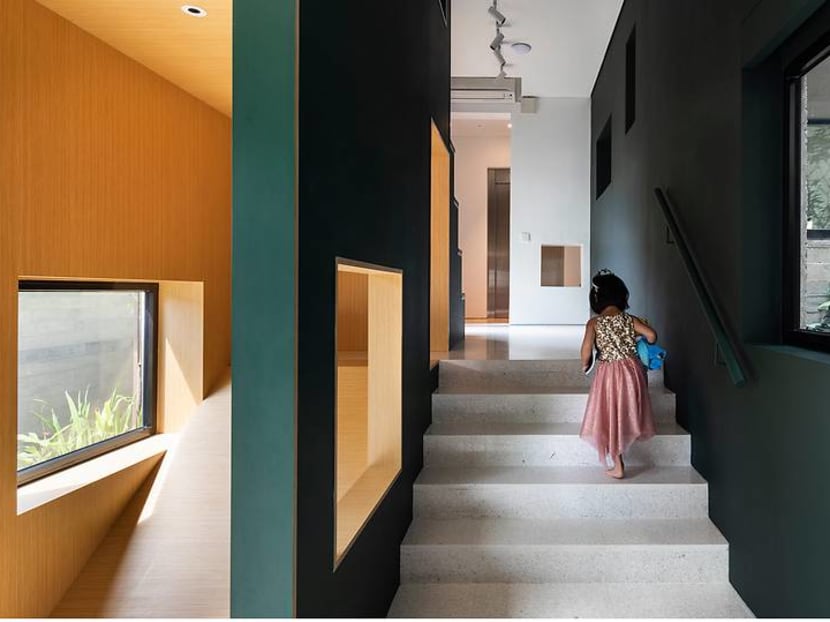
The internal layout of the house is an Escher-like sequence of spaces tunnelling from one to another around a landscaped courtyard. (Photo: Fabian Ong)
From the outside, it is hard to tell how many levels the Window House has. Openings of various sizes arranged in a seemingly random pattern puncture the facade of the two-and-a-half-storey house with a basement, blurring scale and stratification.
There are 80 windows in all on the external and internal walls of the house designed by Formwerkz Architects and Super Assembly. The latter’s founder, Iskandar Idris, honed his skills at the former, reputed for its inventive dwelling designs. He collaborates with Formwerkz on some projects, such as this.
It is not just the windows that give intrigue to this house, lived in by a couple, their four-year-old daughter and their helper. The internal layout – an Escher-like sequence of spaces tunnelling from one to another around a landscaped courtyard – makes moving through it equally compelling.
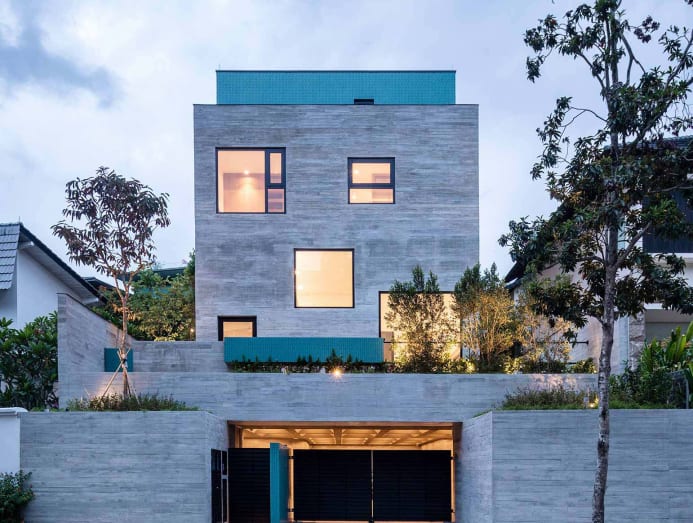
READ> House tour: A cave-like home in Singapore designed for the simple life
The multitude of windows, some aligned to visually connect to other internal spaces, stretch and multiply perspectives to make the house appear bigger than it is. They also frame views of the landscape, bring awareness to happenings in different parts of the house, and enhance natural illumination.
“You cannot really read the house from the outside; you need to enter and explore, and then the house reveals itself. What you see is always changing as you move, so the experiences are never the same,” said Idris.
This ambulatory aspect is deliberate. The owner did not like the characterless, singular, vast living areas in other homes he had visited.
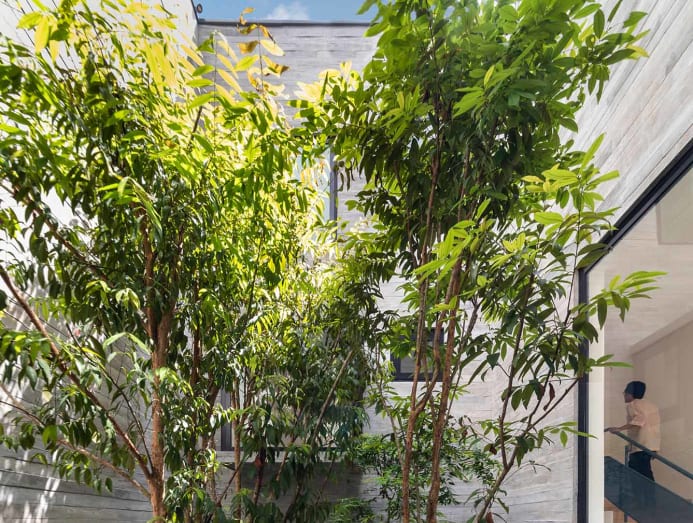
“We don’t need any specific area to be big as long as the living and dining does not feel too far away from each other, and the spaces are interconnected. We did not want our daughter’s room to be big so she will [be forced to] come out,” said the owner.
He wanted a house with various spatial qualities to relax in and entertain his huge extended family during festive seasons. “But it shouldn’t be just tons of rooms that would inevitably be under-utilised when the parties are over. So we designed the spaces to be a continuous landscape where one could freely move and search for his or her cosy corner depending on mood and time of day,” said Alan Tay, a partner at Formwerkz Architects.
“I like that there are at least 10 different spots in the house that I can enjoy sitting down and doing different activities,” said the owner. There are no less than five sofas spread throughout for this purpose, including in the second storey family area.
“From the outside, the house looks unconventional. But inside, it is perfectly [peaceful] as the windows have been designed to focus your eyes on a particular view, and each has a different scenery,” he said.
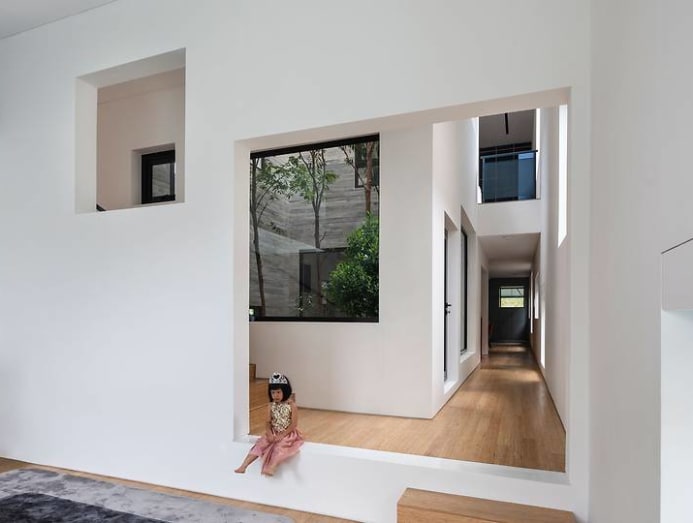
READ> House tour: A three-storey family home in Singapore enveloped by lush gardens
“You cannot really read the house from the outside; you need to enter and explore, and then the house reveals itself. What you see is always changing as you move, so the experiences are never the same.” – Iskandar Idris
The house’s basement is at road level, giving privacy to the elevated living spaces. There are two ways to enter the house: Either up a series of steps to the pool and garden, which is overlooked by the living room; or from the four-car basement garage via a striking carmine spiral staircase.
The ample windows around the staircase means the basement is not dark and secluded – something the owner wanted to avoid. While tall trees in the courtyard bring the attention toward the sky, the spiral staircase turns the focus downward to the basement mezzanine where the daughter has her piano lessons. It overlooks a lower basement containing a lounge and movie room.
The house’s differential height and non-linear layout can be confusing for first-time visitors. The owner candidly shared that his mother still gets lost even though she visits twice weekly to look after her grandchild. On the other hand, his retired father knows every nook and cranny as he helped manage the project during construction.
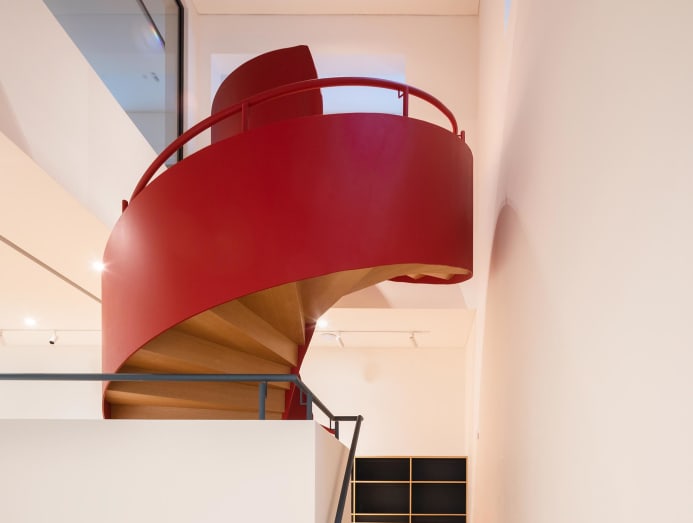
The architects’ use of colour thus not only enriches the house, but also helps in way-finding. Tay shared that it was inspired by the colourful Memphis design movement of the 1980s. On the outside, turquoise ceramic tiles and off-form concrete juxtapose in textural dialogue. Aside from the eye-catching tone of the spiral staircase, burgundy cabinets back the study, a vermillion screen heralds the powder room, bathrooms feature colourful mosaic tiles, and the television consoles in different common areas each have a different shade.
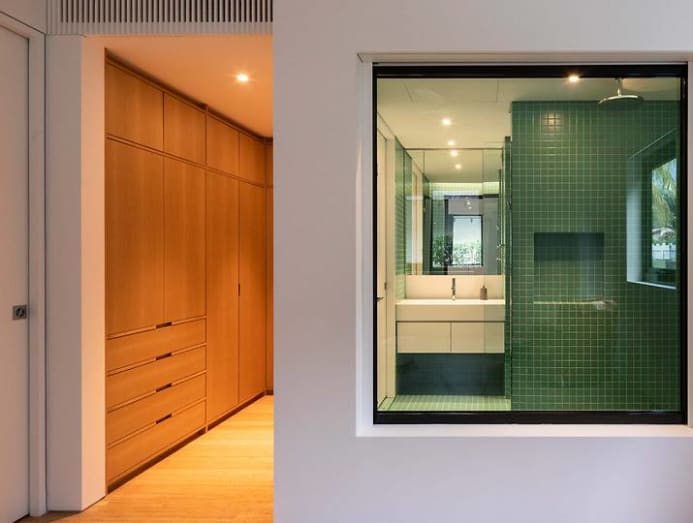
If this spirited use of colour and graphic windows, as well as topographical way of traversing the house delights adults, it is all the more enjoyable for the daughter and young visitors.
The owner agreed, sharing that while he takes the lift from his attic bedroom straight to the dining room for breakfast in the morning, his daughter chooses the longer route of running down the stairs, taking a pause in an upholstered window niche to observe birds in the courtyard, and nips in and out of her playroom before arriving in the dining room.
The playroom, which is adjacent to the dining room, is coated in deep green blackboard paint. Adults can watch children at play as they continue with their meals. There is an upholstered window niche for reading in, a raised hideaway and a built-in slide. “It is like a miniature [version] of the house,” Idris described.
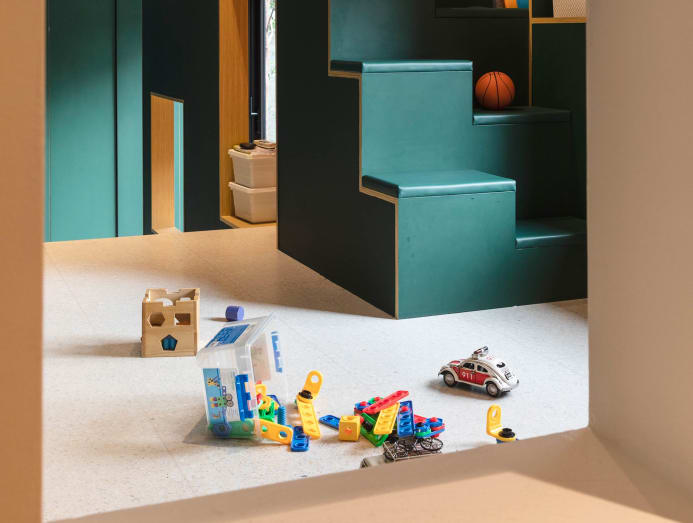
READ> House Tour: A refurbished 33,000 sq ft family home in Singapore
As the family only moved in at the beginning the year, they have not yet organised large gatherings due to the COVID-19 pandemic. But the circuit breaker has given them plentiful time to understand the house’s peculiarities.
“I discovered that our family could spend a lot of time with my daughter indoors. We read books to her in various corners of the house, watched movies together, did up the music corner in the basement mezzanine and [created an impromptu] sports corner in the basement lounge,” said the owner. The high ceilings in the lounge were well suited to indoor tennis games.
While he hardly used the pool of the condominium he previously lived at, he now plays regularly with his daughter in the pool. When the parks were closed for a period during the circuit breaker, the family found the spacious car park could double as cycling grounds – even for the adults.
As for working from home, the owner was glad for a study that was not entirely detached from the rest of the house. Through the layered windows, he could observe his daughter from his perch, while she was engaged in her home-based-learning session at the dining table.
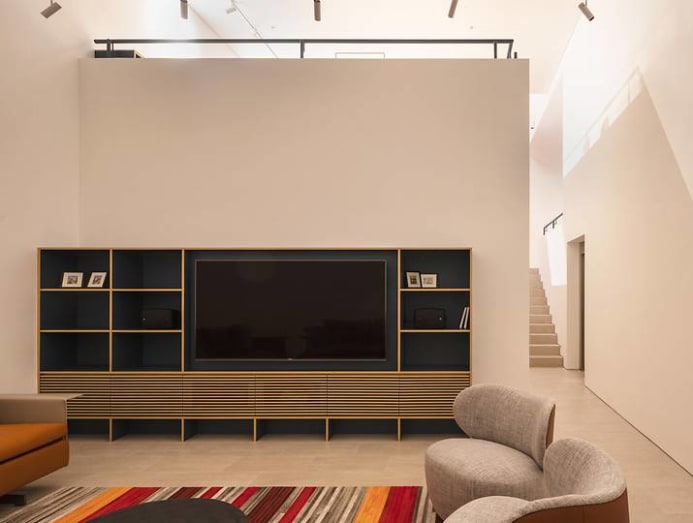
The house has definitely connected the family more with nature, even if it is through views rather than being physically immersed in it. The owner appreciates greenery but wanted to keep the plants outside, as he dislikes insects in the house.
“When I stayed in a condominium, I would wake to [a view of] the apartment opposite. Now when I wake up and pull the blinds up, I see the birds flying, and the bees going from tree to tree. And from the balcony, you can see the stars at night,” shared the owner.
The family have also identified a resident squirrel and bird. “And if it is raining, I open the long window by the pool and sit there with my daughter, listening to the rain,” said the satisfied owner.
“We designed the spaces to be a continuous landscape where one could freely move and search for his or her cosy corner depending on mood and time of day.” – Alan Tay



